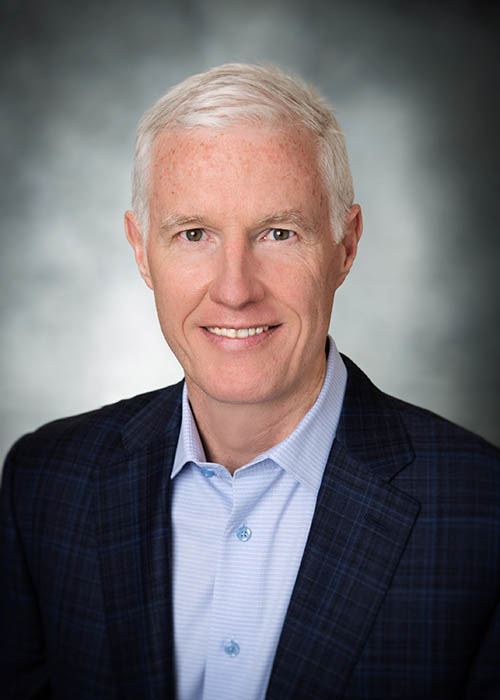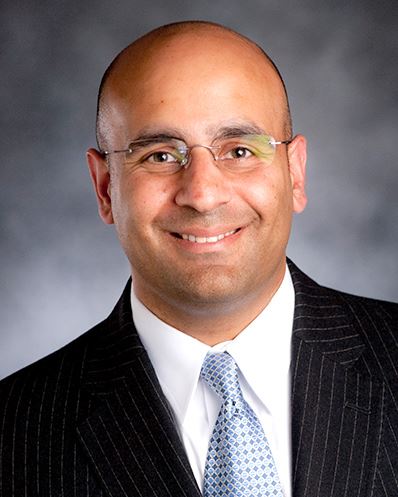Health Connection - February 2021

Your heart – the body's most hard-working muscle
 Your heart beats about 100,000 times a day – 2.5 billion times in an average lifetime – pumping oxygen and nutrient-rich blood to every part of your body. Arteries carry oxygenated blood from your heart to the rest of your body. Veins return oxygen-depleted blood and carbon dioxide back to your heart and lungs. The exchange of gases, nutrients, and waste happens in tiny blood vessels called capillaries. This is the cycle that keeps us going – literally! And since February is National Heart Month, there’s no better time to take a closer look at what makes your ticker… tick.
Your heart beats about 100,000 times a day – 2.5 billion times in an average lifetime – pumping oxygen and nutrient-rich blood to every part of your body. Arteries carry oxygenated blood from your heart to the rest of your body. Veins return oxygen-depleted blood and carbon dioxide back to your heart and lungs. The exchange of gases, nutrients, and waste happens in tiny blood vessels called capillaries. This is the cycle that keeps us going – literally! And since February is National Heart Month, there’s no better time to take a closer look at what makes your ticker… tick.
Anatomy of your heart
Your heart is the body’s most powerful muscle. Its walls consist of three layers: the inside layer is the endocardium. The muscular middle layer is the myocardium. The outer layer, or epicardium, is protective. A sac-like membrane called the pericardium secures your heart to your diaphragm and the back of your breastbone. The outer layer of the pericardium encircles the roots of the heart’s major blood vessels. The inner layer is attached to the heart muscle. The inside of your heart is divided into two upper chambers, the left atrium and right atrium, and two lower chambers, the left and right ventricles.
Blood travels through your heart as follows:
- The superior and inferior vena cava take oxygen-depleted blood up to your heart through the right atrium. The blood then enters the right ventricle through the tricuspid valve. Like all the valves in the heart, the tricuspid opens only one way to keep blood flowing in the right direction.
- The right ventricle pumps blood through the pulmonary valve to pulmonary artery and on to the lungs where carbon dioxide diffuses out and is released as you exhale, and oxygen is taken up by your red blood cells as you inhale.
- Newly oxygenated blood from your lungs enters the left atrium through the pulmonary vein. Blood then flows through the mitral valve to the left ventricle.
- To leave the left ventricle, blood goes through one more valve, the aortic valve, and on into the aorta.
Your Heart’s Electrical System
Your heartbeat is triggered by the sinus node, a specialized bunch of cells located in your right atrium. Often called “the body’s natural pacemaker,” the sinus node generates a regular electrical stimulus 60 to 100 times per minute. Each electrical impulse causes the two atria to contract. The impulse then travels to the atrioventricular, or AV, node, a cluster of cells between the atria and the ventricles. There, the electrical impulse is slowed for a fraction of a second so blood can fill up the ventricles before they contract, releasing freshly oxygenated blood into the aorta. Each ventricular contraction represents one heartbeat.
Cardiology and its Sub-specialties
A cardiologist is a doctor who specializes in the diagnosis and treatment of diseases of the cardiovascular system, including the heart and blood vessels. Cardiologists are trained to treat the most common heart conditions, including heart attacks, coronary heart disease, congestive heart failure, heart valve disease, arrhythmia, and high blood pressure. They also advise patients on lifestyle changes as well as medication to help maintain cardiovascular wellness. As the field of cardiology grows increasingly complex, new sub-specialties have emerged:
- Noninvasive Cardiologist
This is a term sometimes used for a general cardiologist who focuses on diagnosis of heart conditions and non-invasive testing such as stress tests and electrocardiograms. - Interventional Cardiologist
These experts specialize in minimally invasive, catheter-based treatments and tests. Interventional cardiology procedures include angioplasty, balloon angioplasty, atherectomy, and stent implantation. - Electrophysiologist
Electrophysiology is a discipline that focuses on problems related to the heart’s electrical system. Electrophysiologists diagnose and treat heart rhythm abnormalities known as arrhythmias, in which the heart beats irregularly, too slowly, or too rapidly. At MarinHealth, we have a state-of-the-art Electrophysiology Lab that treats conditions spanning a variety of rhythm abnormalities. - Structural Heart Cardiologist
Structural heart disease refers to congenital or acquired abnormalities in the heart's valves, wall, or chambers. There is no such thing as a “structural heart specialist” because heart defects are treated in a variety of ways depending on the individual patient. Most programs, including MarinHealth Structural Heart Program rely on a collaborative, multidisciplinary group of experts in Interventional Cardiology, Cardiac Surgery, and Electrophysiology. - Sports Cardiologist
Sports cardiology is an emerging subspecialty that bridges cardiology and sports medicine. Specialists in sports cardiology, including those at MarinHealth’s Cardiovascular Performance Center, have special expertise in exercise physiology and specialize in the care of athletes and active individuals with known or suspected cardiovascular conditions. Like Structural Heart, Sports Cardiology touches on multiple cardiology subspecialties and requires a team approach. - Cardiothoracic Surgeon
These specialists are trained to operate on the heart, lungs and thorax. Cardiothoracic surgeons are not cardiologists per se, but they perform open surgery to repair or replace faulty heart valves, fix aneurysms in the chest, and perform coronary bypass surgery in cases where balloon or stent procedures are not recommended. - Vascular Surgeon
Vascular surgeons operate on the arteries, veins and the lymphatic system in every part of the body except the brain and heart. However, they are the go-to surgeons for issues affecting the carotid arteries in the neck and the aorta, which connect to the heart.
Learn more about MarinHealth’s Haynes Cardiovascular Institute, our comprehensive, leading-edge Cardiovascular Medicine Program, and the team of experts providing innovative and effective treatment.
Dr. Keeffe is a MarinHealth cardiologist specializing in preventive cardiology, cardiac CT imaging, and the cardiovascular benefits of exercise.
More Zzzzzs, please!
 Most of us know what it’s like to push through the day on too little sleep. You’re grouchy and short-tempered. Your memory and judgment may be impacted. You may be more accident prone at home and behind the wheel. And that’s just after one rough night.
Most of us know what it’s like to push through the day on too little sleep. You’re grouchy and short-tempered. Your memory and judgment may be impacted. You may be more accident prone at home and behind the wheel. And that’s just after one rough night.
Long term sleep deprivation has cumulative consequences on your general health: Your risk for high blood pressure increases if you sleep less than five hours a night; lack of sleep raises insulin levels, putting you at risk for type 2 diabetes; you are more prone to weight gain; inadequate sleep has been linked to higher levels of chemicals linked to inflammation, which raises your risk for heart disease; poor sleep reduces sex drive in both sexes and can lead to erectile dysfunction in men.
Causes of Insomnia
Insomnia affects most people from time to time, and chronic insomnia can have a variety of causes:
- Physical - Arthritis pain, heartburn, frequent urination, andsleep apnea are common issues that can keep you awake or prevent you from getting deep, uninterrupted sleep.
- Emotional - Stress and worry are major culprits, especially during the pandemic. Concerns about work, money, or family, or a traumatic life event can keep your mind racing and wide-awake. Insomnia can also be a symptom of clinical depression.
- Environmental – It can be hard to sleep in a room that’s too hot, too cold, too bright, or too noisy.
- Circumstantial – Frequent traveling across time zones or working a late or very early shift can disrupt your circadian rhythm (sleep/wake cycle).
- Medicinal – Some medications taken too close to bedtime may cause you to have difficulty falling asleep.
Tips for Better Sleep
Fortunately, there are many things you can do to improve your sleep. Before resorting to sleeping pills, trying the following tips:
- Set the stage. Optimize your bedroom environment. Invest in quality bedding and a comfortable pillow and replace your mattress every 5-7 years. Keep the temperature around 65°F and make sure your window treatments don’t let in too much early morning light. If noise is a problem, consider a white noise machine. Use a diffuser to perfume your room with the relaxing scent of lavender. Remember, the bedroom is a place for sleep. Complete other activities like checking email, reading on your iPad, eating, and watching TV in another room so you can fully relax when you climb into bed.
- Reinforce your circadian rhythm– the natural time clock that governs your body’s sleep/wake cycle:
- Get plenty of bright light, especially sunlight, during the day.
- Blue light can trick your brain into thinking it’s still daytime. Limit your evening exposure to blue light from smartphones, computers, and your TV. Turn all devices off two hours before bed.
- Avoid napping, especially naps lasting longer than 45 minutes and naps late in the day.
- Develop a sleep and wake schedule, getting up and going to bed at the same time.
- Avoid checking the time at night. Checking the time increases cognitive arousal and keeps you awake.
- Wind down. Ease your mind and body into sleep mode by relaxing before heading to bed. Turn off the TV and lower the lights. Put on some relaxing music. Meditate, do some breathing exercises or listen to a guided imagery program. Do a little low impact stretching or yin yoga. Take a hot bath or read a book.
- Try melatonin. Melatonin is a key sleep hormone that helps stabilize the circadian rhythm and can be taken as a supplement. You can also try over-the-counter sleep aids, but it’s a good idea to talk to your healthcare provider first. These medications contain ingredients that can be harmful depending on your underlying health conditions.
- Watch what you eat, and when. Don’t eat too close to bedtime and minimize fatty and spicy foods that can cause heartburn. Avoid caffeine and alcohol. Although alcohol can make you drowsy, its metabolites become active as you sleep and ruin your sleep cycle. You may fall asleep quickly only to find yourself wide awake at 4 am. Stop drinking liquids 1-2 hours before bed to lower the likelihood of having to get up to use the bathroom.
- Get moving. Regular exercise is one of the best ways to ensure a good night’s sleep. It’s best to work out earlier in the day because working out stimulates the production of the hormones epinephrine and adrenaline and increases alertness. Avoid rigorous exercise 2 hours before bedtime.
- Don’t smoke! Exposure to smoke/nicotine, including secondhand, has been associated with difficulty falling asleep and fragmented sleep.
You still can’t sleep. Now what?
Going to bed every night worrying about whether you will be able to sleep is a recipe for insomnia. If you’ve been tossing and turning for 20 minutes without being able to fall asleep, get up and read in low light. Avoid looking at the clock and get your mind off the fact that you can’t sleep before returning to bed. If you are experiencing serious, long-term difficulty sleeping, talk with your doctor. He or she may want to recommend some tests and maybe a sleep study to rule out sleep apnea, restless leg syndrome, or a circadian rhythm disorder.
Dr. Sandhu is an Internal Medicine Specialist at MarinHealth Internal Medicine | A UCSF Health Clinic.
Emergency Department or Urgent Care?
By Russ Braun, MD, MBA, MPH, FACEP
- Your family member has sudden difficulty walking and maintaining their balance.
- Your stomach has been cramping all day. Could it be food poisoning?
- You’re chopping onions when the knife slips. It looks like you’ll need stitches.
 These are three very different situations, but they all demand a decision. Do you call your doctor and hope you can get in within 24 hours? Visit urgent care? Drive to the emergency department, or call 911?
These are three very different situations, but they all demand a decision. Do you call your doctor and hope you can get in within 24 hours? Visit urgent care? Drive to the emergency department, or call 911?
It all comes down to the severity of the illness of injury. Sudden difficulty walking and balance issues could be signs of a stroke. This requires an immediate trip to the emergency room for evaluation. The other two examples are minor conditions your family doctor would normally treat, provided you can get an appointment soon enough. The stomach bug may be better tomorrow but the bleeding cut needs stitches now. If you can’t get an appointment right away or the doctor’s office is closed, an urgent care clinic could be just what the doctor ordered.
Hospital emergency departments are equipped and staffed to provide care for the most serious, life-threatening situations, ranging from stroke or heart attack to serious traumatic injuries. These types of conditions take priority. That’s why, when people show up at the ED, they are seen by a triage nurse who prioritizes patients according to the severity of their condition. The stroke patient will get whisked off and seen right away. The person with the small cut needing stitches may have to wait. If you can’t get in to see your doctor right away or you need treatment after hours, urgent care is often a quicker and more convenient option. We’re excited to announce that MarinHealth Urgent Care | A UCSF Health Clinic, will be opening in San Rafael on Tuesday, March 9. The clinic will provide treatment for a variety of injuries and illnesses.
While MarinHealth Urgent Care clinic will treat pediatric patients 3 months and older, we also offer after-hours care specifically for children — provided by pediatricians—at MarinHealth Pediatric After-Hours Care in Larkspur.
Consider urgent care for treatment of conditions such as:
- Aches and pains
- Allergies
- Animal bites
- Asthma
- Bad back pain
- Minor fractures, sprains, strains – (not for larger bones or anything requiring a cast)
- Bronchitis
- Burns
- Cough, cold, flu, sore throat
- Cuts, scratches, minor lacerations
- Earaches
- Fever (under 105 degrees)
- Foreign body in eye, ear, or nose
- Pink eye
- Sinus infection
- Skin rashes
- Strep throat
- Upset stomach (cramps, vomiting, diarrhea)
- Urinary tract infections
Go directly to the nearest emergency department or call 911 for significant or life-threatening conditions, such as:
- Chest pain
- Stroke symptoms:
- Sudden onset of weakness or numbness on one side of the face or body.
- Sudden speech difficulty or confusion.
- Sudden difficulty seeing in one or both eyes.
- Sudden onset of dizziness, trouble walking or loss of balance.
- Sudden, severe headache.
- Head injury
- Significant injury and taking a blood thinner
- Eye injury
- Severe abdominal pain
- Loss of consciousness
- Shortness of breath
- Seizure
- Illness in children less than 3 months of age
- Severe bleeding
- Broken bones
- Major burns
- Loss of vision
- Fainting
- Poisoning
- Chemical exposure
- Drug overdose or alcohol poisoning
- Heat stroke
- Vaginal bleeding in a pregnant woman
MarinHealth Urgent Care is not currently administering COVID-19 tests, treatment, or vaccines. All patients will be screened when arriving or calling for an appointment. If you have COVID-19 symptoms, call the MarinHealth Adult Acute Care Clinic at 1-628-336-5205.
Knowing the differences between emergency care and urgent care will insure you know the right kind of treatment to seek if the need arises. Learn more by listening to this short podcast.
Russ Braun, MD, is an Emergency and Urgent Care Physician at MarinHealth Urgent Care | A UCSF Health Clinic.
Traumatic Brain Injury: Redefining Concussion
 For most of us, the word concussion brings to mind a sports-related injury that might get a child benched for a couple of days. Traumatic brain injury sounds more frightening – like something that would require hospitalization and possibly even surgery. The truth is that a concussion IS a traumatic brain injury and needs to be taken seriously. The difference between a concussion and a more serious traumatic brain injury is that concussions DO NOT result in any bleeding or bruising of the brain that would indicate permanent damage has been done. This damage can typically be seen using a CT scan or MRI performed soon after the injury. Rather, concussions are due to temporary changes in the brain’s chemical and electrical signals which is reflected in the symptoms the victim exhibits. Over time, these brain recovers these functions and most people begin to recover minutes to hours after the injury. However, full recovery can take weeks to months. The key difference then between a concussion and a more severe injury is that concussions represent transient dysfunction of the brain rather than irreparable damage and dysfunction associated with bleeding or bruising of the brain.
For most of us, the word concussion brings to mind a sports-related injury that might get a child benched for a couple of days. Traumatic brain injury sounds more frightening – like something that would require hospitalization and possibly even surgery. The truth is that a concussion IS a traumatic brain injury and needs to be taken seriously. The difference between a concussion and a more serious traumatic brain injury is that concussions DO NOT result in any bleeding or bruising of the brain that would indicate permanent damage has been done. This damage can typically be seen using a CT scan or MRI performed soon after the injury. Rather, concussions are due to temporary changes in the brain’s chemical and electrical signals which is reflected in the symptoms the victim exhibits. Over time, these brain recovers these functions and most people begin to recover minutes to hours after the injury. However, full recovery can take weeks to months. The key difference then between a concussion and a more severe injury is that concussions represent transient dysfunction of the brain rather than irreparable damage and dysfunction associated with bleeding or bruising of the brain.
A Traumatic Brain Injury (TBI) is caused by a bump, blow or jolt to the head the disrupts normal brain function. The severity of the brain injury is typically assessed according to the Glasgow Coma Scale (GCS), a scoring system used to describe a person’s level of consciousness after a TBI. The scale evaluates three key areas of neurologic function: eye opening, motor function, and verbal function. The lowest (worst) score one can achieve is a 3, which indicates no eye opening, no motor function, and no verbal function.
- Mild Traumatic Brain Injury (Glasgow score 13-15) Can be, but is not always, associated with a brief loss of consciousness – minutes or even seconds. The person may also appear dazed or confused, have balance problems, visual disturbances, amnesia, or exhibit inappropriate or unusual behavior. Mild TBIs include, but are not limited to, concussions. Some mild traumatic brain injuries do in fact have a small amount of permanent damage associated with them and can be detected with a CT or MRI of the brain. While the physical damage to the brain may be permanent, the amount of damage is small and other areas of the brain may be able to take over for the damaged regions.
- Moderate Traumatic Brain Injury (Glasgow Score 9-12) involves a loss of consciousness that lasts from a few minutes to as long as a few hours. Confusions can last days or even weeks. Physical, cognitive, and/or behavioral impairments may continue for months and are sometimes permanent. With treatment, people with a moderate TBI can usually make a good recovery or learn to compensate for any results deficits.
- Severe Traumatic Brain Injury (Glasgow scale not applied) usually results from crushing blows or penetrating wounds that physically damage brain tissue. This is the most life-threatening type of brain injury. Treatment usually requires prolonged hospitalization and extensive rehabilitations. Unfortunately, the patient rarely returns to pre-injury status. Severe TBI can cause a wide range of function short- or long-term changes affecting thinking, sensations, language, or emotions. They may also lead to brain disorders that worse with age, such as Alzheimer’s disease or Parkinson’s disease.
Chronic Traumatic Encephalopathy (CTE) is the result of repeated mild TBIs occurring over months or even years. This condition has been in the news over the past few years because it has been diagnosed in several high-profile athletes who play contact sports. In CTE, the brain progressively deteriorates. Common symptoms include memory loss, erratic behavior, impaired judgment, issues with impulse control, aggression and depression, balance issues, and progressive dementia. Learn more about preventing chronic injuries with this guide from MarinHealth.
Hospital or Doctor’s Office? Where to Seek Treatment
How does one know if you have sustained a concussion or have a more serious condition that requires a trip to the emergency room? Whether the patient is a three-year-old who fell down the stairs, a teen who got hurt at football practice, or a senior citizen who lost her balance, the signs to look out for are the same. The following symptoms require an immediate trip to the Emergency Department for evaluation:
- Loss of consciousness at the time of the injury
- Confusion, sluggishness, or disorientation
- A headache with nausea and/or vomiting
- Signs of a deteriorating mental status
- Unusual behavior or confusion
- Weakness, numbness, slurred speech
- Difficulty with eye movements, different sized pupils
- Worsening or severe headache
- Seizure
- Vomiting multiple times
- Difficulty waking up
- Discharge of clear fluid or blood from the nose or ears
Sometimes a person may appear “fine” after the head injury, with symptoms appearing hours later or even the next day. If that occurs, a trip to the Emergency Department is also necessary. When in doubt, get checked out!
Learn more about concussions with this quick, downloadable guide from MarinHealth.
Dr. Arora is an Associate Clinical Professor in the department of neurosurgery, UCSF Medical Center and Director of Neurosurgery at MarinHealth Medical Center. He also serves as an unaffiliated neurotrauma consultant (UNC) for the National Football League (NFL), providing game day, sideline concussion and spinal injury evaluations for the athletes.
